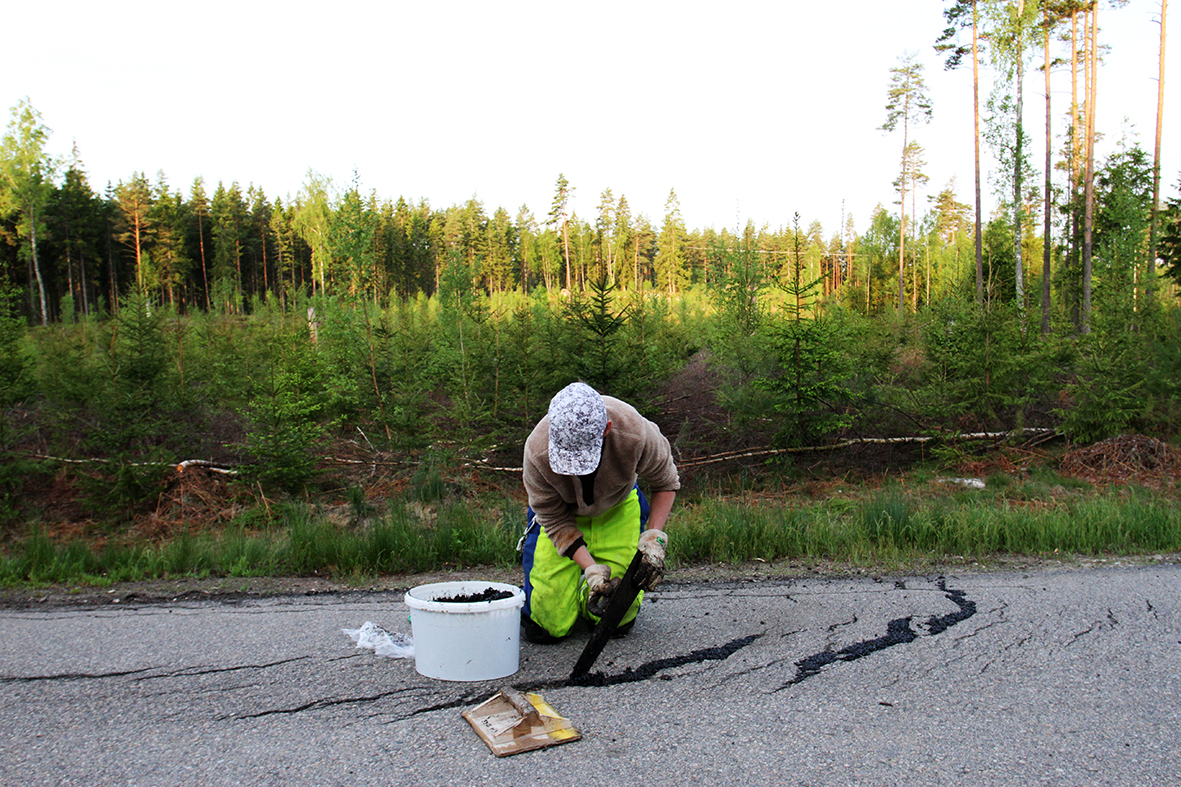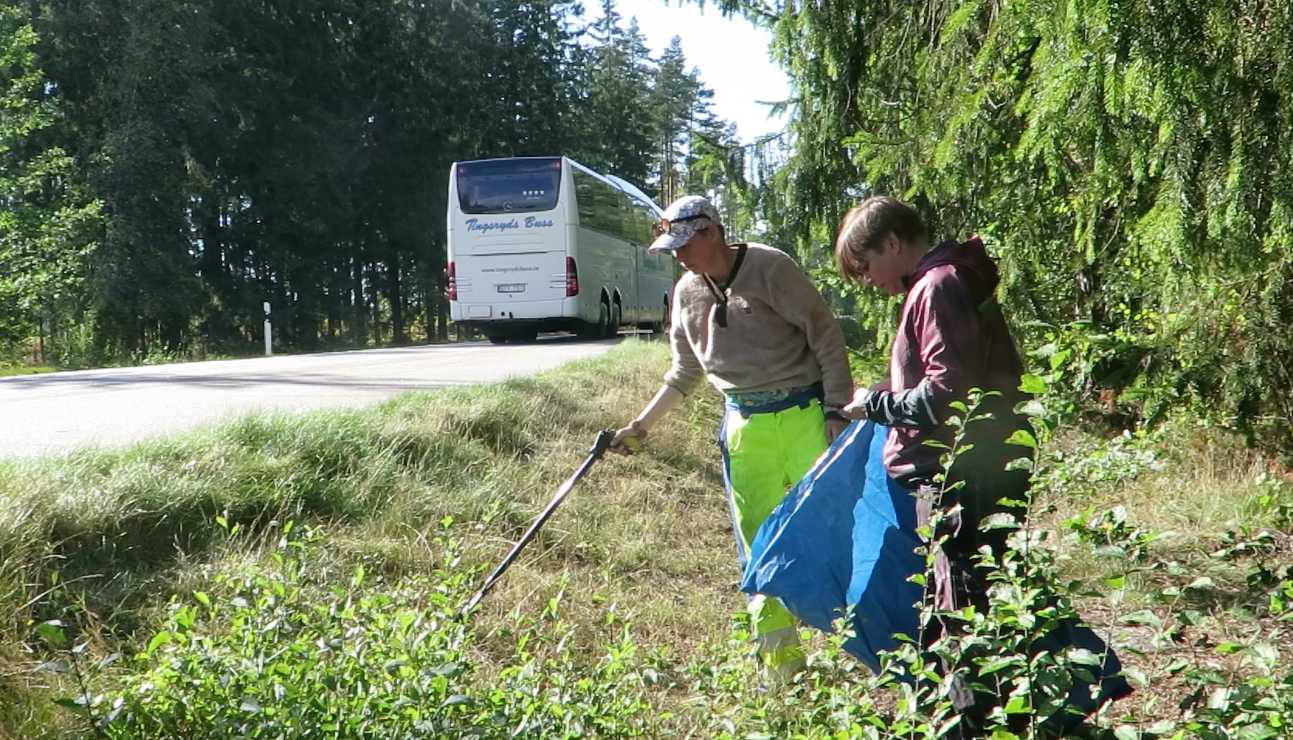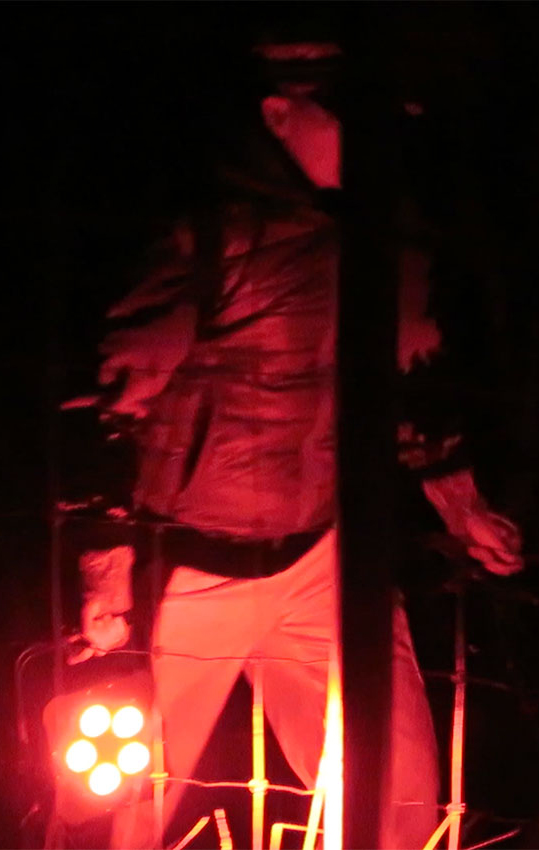



...
..
. . ...
.........
Lisa Torell
works
biography
other works
contact
________________________________________________________________________________________________________
HIGHWAY 25, SHARED SOCIETY MEANS A COMMON DEBT / RIKSVÄG 25, DELAT SAMHÄLLE INNEBÄR EN GEMENSAM SKULD
A collaborative work by Johanna Gustafsson Fürst and me, Lisa Torell made for Residence-in-Nature part two.
MORE INFO IS ON THE WAY
Reviews:
Svea Skog >
Fria Tidningen >
Assistance, camera and film:
Damla Kilickiran and Viktor Pedersen
Text about Highway 25, sharing society means a common debt, by Axel Andersson:
A hillock by the side of the road is carefully combed. A sculpture disguises itself as a flea market bargain. The shooting range in the woods is turned into an almost living place for memory. It is stressed that a series of roadside places for resting constitute a planning for the unpredictable. Call of nature or epiphany? Filmic notes from the participant observations, presence and performances, of the artists with localities by Riksväg 25 are shown in a closed down bank branch in Skuv and at Växjö konsthall.
To both participate and observe demands as much tenderness as violence. One has to enter the place, or it will reveal nothing. But then the place has to be allowed to enter one. The context leads us to a sensation of the act of doing, which is both the price and the prize. It costs, and it gives. How different is this process if we talk about things rather than human beings? And is it at all possible to find the dividing line between the two? The joined map is in the end larger than reality. The one participating soon becomes an explorer in the only putatively most familiar of all worlds.
Info about Residence-in-Nature 2016:
Residence-in-Nature is not an Artist-in-Residence program. It is not a site-specific artistic work. Rather, it can be seen as an experiment and a method in the scale 1:1. We invite participants from different backgrounds, who express themselves artistically through a host of disciplines, to spend time and work in the region of Kronoberg. Residence-in-Nature is interested in what takes place through this presence and these collaborations and in how it relates to the specific context. It looks at what happens when local concerns and questions meet global ones, and at the result in form and content of the trading of knowledge.
Where can we meet art in a sparsely populated rural area mainly comprised of man-made nature in the shape of forestry, streams, old company towns in the transition from industry to post-industry, small towns, nature reserves, tourists, hiking and canoe trails? The aim of Residence-in-Nature is to let the participating artists live and work where they and their practices meet the inhabitants of the area waiting for the bus, in the forests, by the canoe trails, the libraries and roads. Involving them in a change of position leading to an embrace of the public space as a totality.
What is the meaning of the place for production and material? The glass industry was booming in Småland in the 1960s. Artists were invited to live and work in the region to create a new meaning for an industry that previously had made items for more prosaic use, like milk bottles and light bulbs. A mode of production mostly reliant on local materials like rock, glass and timber, became the node in the construction of a society where crafts, economy, labour and artistic figuration came together.
What type of economic development is needed for the construction of contemporary society when the concept of work is changing and many are swept up in flows of migration? Residence-in-Nature investigates everything from notions of community to tourism, consumption and the construction of society. What does one do for the other, and what does it mean for the collective, the community that we share? In which ways can an artistic production contribute to the discussion?
Residence-in-Nature was initiated by Åsa Jungnelius as a long-term collective art project. It was based on her own experiences of context-specific artistic work in a rapidly depopulating area where the post-industrial condition highlights a complex setting. The landscape in Småland is intimately linked with the material culture that gives the coordinates for our economic, social, political and ecological situation.
The initiative coincided with the wish of the regional local authority to through artistic work find a durable form for an experimental Artist-in-Residence program directly linked to the local context.




...
..
. . ...
.........